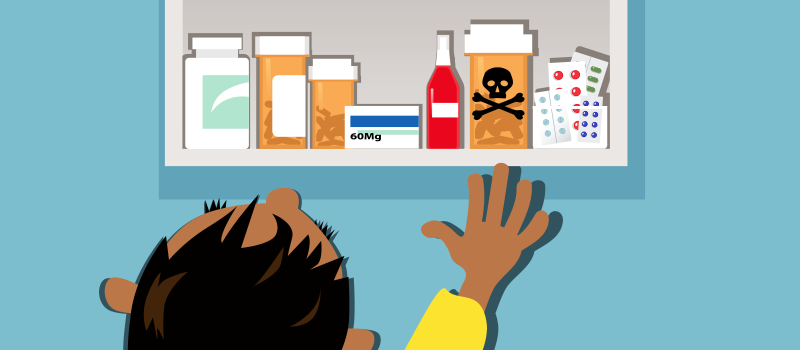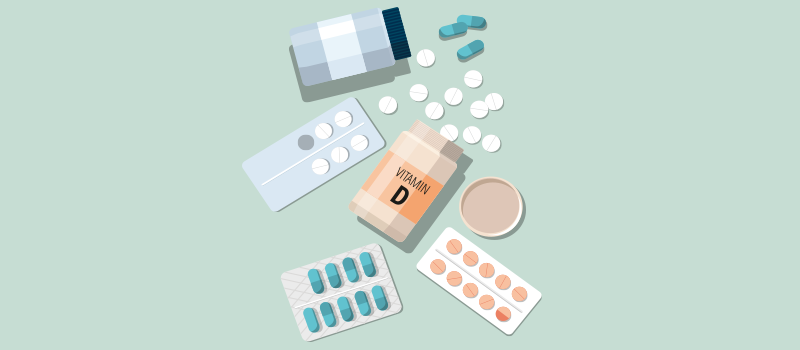What’s the Buzz
The Bee Healthy Blog
What is a Suppository? Uses & Side Effects

Key Takeaways
-
Suppositories are medication dosage forms designed to be placed inside a body cavity, such as the rectum, vagina, or urethra. They contain medicine that works locally or systemically by being absorbed into the bloodstream.
-
A doctor may recommend a suppository when someone cannot tolerate oral medications due to nausea and vomiting.
-
Suppositories are generally safe to use. Rarely, they can cause an allergic reaction. If a rectal suppository causes irritation, burning, or rectal bleeding, call your doctor right away.
Sometimes, doctors recommend using suppositories when someone can not tolerate oral medications due to nausea, vomiting, or trouble swallowing pills. Suppositories are designed to deliver drugs directly into a body cavity such as the rectum, vagina, or urethra to achieve either local or systemic (all over the body) effects.
Examples of suppositories with local effects are rectal suppositories, which are commonly used to restore normal bowel function in people with occasional constipation who have found other constipation treatments ineffective.
Systemic effects are seen in rectal suppositories such as Compazine (prochlorperazine) and Phenergan (promethazine), where drugs get absorbed into the bloodstream to alleviate nausea and vomiting. Please continue reading to learn more about the types of suppositories, how to use them, and their side effects.
What are suppositories?
Suppositories are small round, oval, or conical objects with a rounded or tapered end. They contain medicine surrounded by a lubricant such as gelatin or cocoa butter. When placed inside a body cavity such as the rectum, vagina, or urethra, the suppository dissolves due to body heat to release the medicine. Notably, the drugs contained in the suppositories are intended to work locally or systemically by being absorbed into the bloodstream.
Why do we use suppositories?
A doctor may recommend using a suppository when it is not possible to take oral medications, for example, when:
-
Adults or children have trouble swallowing pills
-
The drug tastes bad and is difficult to take by mouth
-
Someone is vomiting and cannot keep down any oral medicines, such as pills or liquids
-
During an emergency situation, like when someone is having convulsions
-
Problems with the digestive system causing poor absorption of certain medications. For example, certain medicine gets broken down quickly or destroyed in the digestive tract
Laxative suppositories are also used to clean the bowels in preparation for a procedure or surgery. They may be used after surgery and shortly before and after childbirth to avoid straining with bowel movements.
What are the different types of suppositories?
Rectal suppositories
These are the most common types. They are usually about an inch long with a rounded tip. Rectal suppositories are inserted into the anus and used for the treatment of constipation (problems with bowel habits causing irregular bowel movement, painful or difficulty passing stools) and hemorrhoids. They may also be used to relieve nausea and motion sickness. Children who find it difficult to swallow pills may receive rectal suppositories to relieve pain and fever.
Vaginal suppositories
Vaginal suppositories are solid medications inserted into the vagina. They are used to alleviate vaginal dryness and treat bacterial or fungal infections. Contraceptive vaginal suppositories are available as spermicide, which is a form of birth control.
Urethral suppositories
Urethral suppositories are less common. They are inserted into the urethra (urine passage). A urethral suppository containing a medication called alprostadil is used to treat erectile dysfunction (sexual impotence) in men.
Which rectal suppositories work like a laxative?
A rectal suppository works like a laxative. It produces a bowel movement in a short time.
There are different types of laxative suppositories, such as:
-
Hyperosmotic laxatives (for example, sodium phosphates or glycerin suppositories). They increase the absorption of water into the bowel and act as stool softeners.
-
Lubricant laxatives (for example, mineral oil laxatives). They coat the bowel walls and stool with an oily, waterproof film, which helps to retain moisture and soften stool, making it easier to pass.
-
Stimulant laxatives (for example, senna or bisacodyl). They increase bowel muscle contractions and move stool along in the digestive tract.
-
Carbon dioxide-releasing laxatives (for example, sodium bicarbonate and potassium bitartrate). They encourage bowel movements by releasing carbon dioxide gas, which pushes against the bowel wall and causes contraction of the bowel muscles, helping to move stool along.
-
Emollient laxatives (for example, docusate). They add liquid and prevent dehydration of stool, making it easier to have a bowel movement without straining.
What exactly does a suppository do?
Suppositories are designed to achieve essentially the same goal, meaning they all contain medications that get melted by the body heat to treat the area where they are placed or the drug gets absorbed into the bloodstream, providing a systemic (all over the body) effect. With that said, the main differences between different types of suppositories are the locations in which they are designed to be administered and the effects of the medications contained in the suppositories.
A rectal suppository is one of the most common types used to deliver medication directly into the rectum. There are different types of rectal suppositories used for different reasons.
A lot of time, a rectal suppository is used to provide relief from constipation by drawing water into the stool and softening it, lubricating the bowel walls, and/or increasing muscle contractions in the bowels, which makes it easier to have a bowel movement.
On the other hand, there are rectal suppositories that are used to alleviate nausea and vomiting. Examples include prochlorperazine (Compazine) and promethazine (Phenergan). This type of suppository is very useful when someone experiences severe nausea and vomiting and they can’t tolerate oral medications.
How long does it take laxative suppositories to work?
You can expect a bowel movement about 15-60 minutes after insertion of a suppository. Notably, rectal suppositories are considered one of the best options, providing fast relief when other treatment options have not provided adequate results. Make sure you have access to a bathroom (toilet) before inserting a rectal suppository. To make sure the medication is well absorbed, you should stay in the lying down position for at least 5 minutes.
Note that enemas work even faster, typically within 5 minutes.
Can you use a rectal suppository every day?
Laxative suppositories are for the relief of occasional constipation. They should not be used routinely every day to have bowel movements. Overuse can lead to a loss of normal bowel function and an inability to have bowel movements without laxatives. If you need to use an over-the-counter laxative suppository for more than 7 days, call your doctor. There may be something else going on that needs to be diagnosed and treated.
What are the side effects of using suppositories for regular bowel movements?
Suppositories are generally safe to use. Rarely, they can cause an allergic reaction with a skin rash, hives, itching, or swelling of the head and neck. Seek emergency medical care if this happens.
If using a rectal suppository causes irritation, burning, or rectal bleeding, call your doctor right away. Also, contact your doctor if you don’t have a bowel movement after using a suppository. Tell your doctor if you notice a sudden change in your bowel habits.
How do I insert a suppository?
Here are the steps to insert the suppository (for rectal use):
-
Wash your hands with soap and water.
-
If the suppository is soft, harden it by running it under some cold water or placing it in a refrigerator for about 5 minutes. Then, remove it from the wrapper.
-
You can wear a surgical glove or finger cover if you want.
-
Lubricate the tip of the suppository with a water-based lubricant such as K-Y Jelly. Do not use petroleum jelly (Vaseline). If you don’t have a lubricant, dab some warm water on your anus.
-
Lie in a comfortable position on your left side (if you are right-handed), with your left leg straight and the right leg bent forward toward your stomach and chest.
-
Gently spread your buttocks open and lift your upper buttock. Carefully push the suppository, pointed end first, for about 1 inch in adults and 1/2 inch in young children until it passes the circular muscle sphincter. The suppository may slip out if you don’t push it beyond the sphincter.
-
Hold your buttocks together for a few seconds and remain lying down for 5 minutes to prevent the suppository from popping out.
-
Clean your hands with soap and water once more after using the suppository.
Ask your doctor or pharmacist if you have further questions about using suppositories correctly.
Save on Your Medication with BuzzRx!
Manage your medication costs with BuzzRx coupons. Here are direct links to substantial savings for each medication:
-
Prochlorperazine Coupon: The typical retail price is $145.99. With BuzzRx coupons, pay as low as $25.86.
-
Promethazine Coupon: Retail prices are between $18.99 and $24.32. With BuzzRx coupons, pay as low as $6.32.
-
Alprostadil Coupon: Pay as low as $94.81 with your BuzzRx coupons.
-
Sodium-Potassium-Phosphorus Coupon: Retail prices are about $34.91, but with BuzzRx coupons, you can pay as little as $14.73.
-
Glycerin Laxative Coupon: Use your BuzzRx coupons to pay between $8.49 and $11.21.
-
Mineral Oil Enema Coupon: You can pay as low as $6.07 with a BuzzRx coupon.
-
Senna Coupon: Retail prices are around $10.23. With BuzzRx coupons, pay as little as $3.92.
-
Bisacodyl Coupon: Pay as low as $3.81 with a BuzzRx coupon.
-
Sodium Bicarbonate Coupon: Use your BuzzRx coupons to pay as low as $5.19.
-
Docusate Sodium Coupon: With BuzzRx coupons, pay as low as $4.99.
Remember, these coupons are widely accepted at over 60,000 pharmacies, including major chains like CVS, Walgreens, and Rite Aid. Just present your coupon at the pharmacy to ensure you're getting the best possible price.
References:
-
https://my.clevelandclinic.org/health/drugs/23729-glycerin-rectal-suppositories
-
https://www.mayoclinic.org/drugs-supplements/laxative-rectal-route/description/drg-20070715
-
https://www.plymouthhospitals.nhs.uk/display-pil/pil-suppositories-how-to-use-them--6294/
-
http://card-usf.fmhi.usf.edu/resources/materials/docs/Rectal%20Suppositories%20Flyer.pdf












SOCIAL